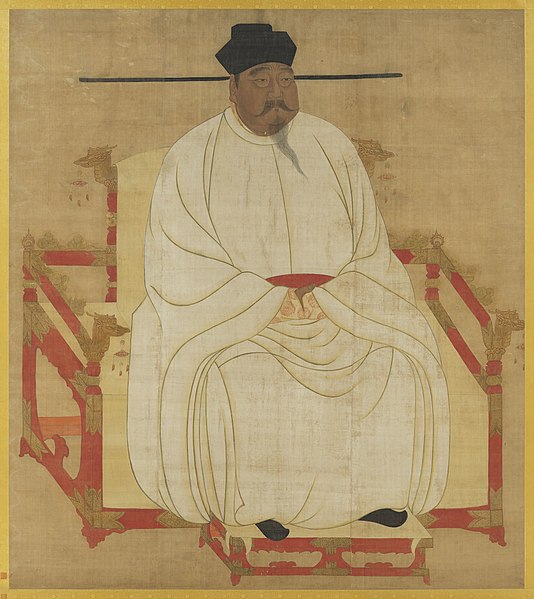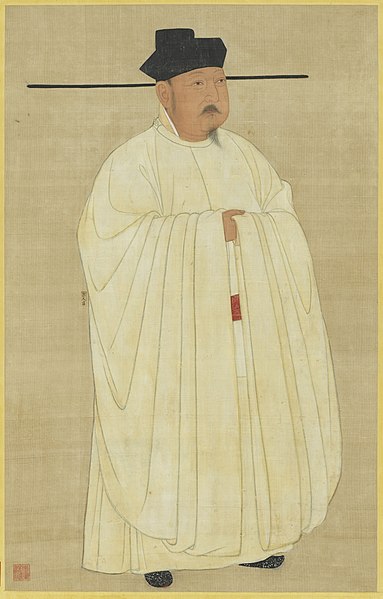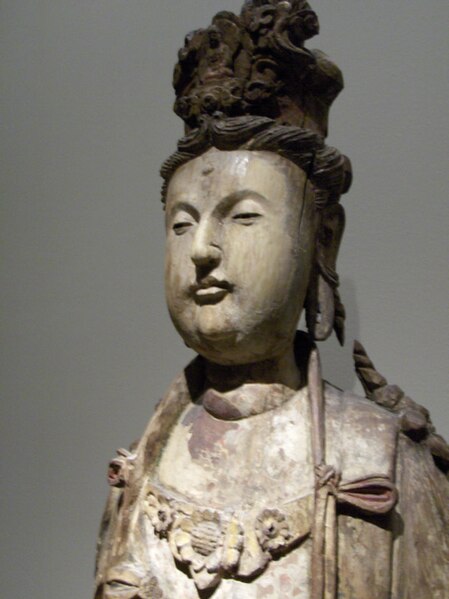Emperor Huizong of Song, personal name Zhao Ji, was the eighth emperor of the Song dynasty of China and the penultimate emperor of the Northern Song dynasty. He was also a very well-known painter, poet and calligrapher. Born as the 11th son of Emperor Shenzong, he ascended the throne in 1100 upon the death of his elder brother and predecessor, Emperor Zhezong, because Emperor Zhezong's only son died prematurely. He lived in luxury, sophistication and art in the first half of his life. In 1126, when the Jurchen-led Jin dynasty invaded the Song dynasty during the Jin–Song Wars, Emperor Huizong abdicated and passed on his throne to his eldest son, Zhao Huan while Huizong assumed the honorary title of Taishang Huang. The following year, the Song capital, Bianjing, was conquered by Jin forces in an event historically known as the Jingkang Incident. Emperor Huizong and Emperor Qinzong and the rest of their family were taken captive by the Jurchens and brought back to the Jin capital, Huining Prefecture in 1128. The Emperor Taizong of Jin, gave the former Emperor Huizong a title, Duke Hunde, to humiliate him. After Zhao Gou, the only surviving son of Huizong to avoid capture by the Jin, declared himself as the dynasty's tenth emperor as Emperor Gaozong, the Jurchens used Huizong, Qinzong, and other imperial family members to put pressure on Gaozong and his court to surrender. Emperor Huizong died in Wuguocheng after spending about nine years in captivity. He, along with his successors, were blamed for the Song dynasty's decline.

Palace portrait of Emperor Huizong, on a hanging scroll, kept in the National Palace Museum, Taipei, Taiwan
Pigeon on a Peach Branch(桃鳩圖,桃鳩図 [ja]), by Emperor Huizong
"Chong Ning Tongbao" in the style of Emperor Huizong's Slender Gold calligraphy.
Women preparing silk, a Chinese silk painting by Emperor Huizong of Song, early 12th century.
The Song dynasty was an imperial dynasty of China that ruled from 960 to 1279. The dynasty was founded by Emperor Taizu of Song, who usurped the throne of the Later Zhou dynasty and went on to conquer the rest of the Ten Kingdoms, ending the Five Dynasties and Ten Kingdoms period. The Song often came into conflict with the contemporaneous Liao, Western Xia and Jin dynasties in northern China. After retreating to southern China following attacks by the Jin dynasty, the Song was eventually conquered by the Mongol-led Yuan dynasty.
Emperor Taizu of Song (r. 960–976), a court portrait painting
A portrait of Emperor Taizong of Song (r. 976–997)
A wooden Bodhisattva from the Song dynasty (960–1279)
Flock of Crane over Song Palace painting by Emperor Huizong


![Pigeon on a Peach Branch(桃鳩圖,桃鳩図 [ja]), by Emperor Huizong](https://upload.wikimedia.org/wikipedia/commons/thumb/5/5b/Momohatozu_Huizong.JPG/549px-Momohatozu_Huizong.JPG)





